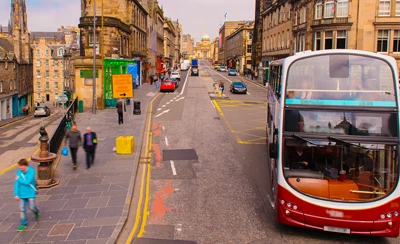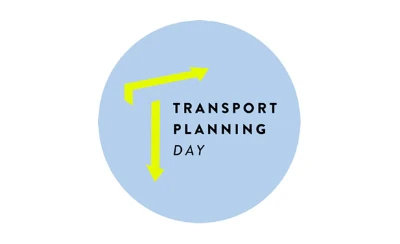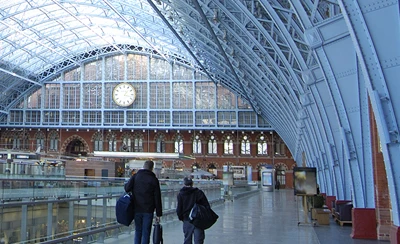Celebrating Cycleway 31! Personal reflections on how cycle schemes benefit the wider community
Today is my first day back at work following maternity leave. Now a mother of two, I feel a renewed desire to make a positive impact. So I’ve been reflecting on the projects that remind me how worthwhile my job as a transport planner is.
One of the initiatives I’m most proud of is TfL’s Mini-Holland programme. I was involved in assessing the potential for cycling in the applicant boroughs and designed a monitoring programme to give insight of how the schemes were working. The aim is to build a case for how investment in active modes benefits people’s health, places and local business. The three Mini-Holland boroughs selected in 2014 (Enfield, Kingston-upon-Thames and Waltham Forest) each received around £30 million to improve active travel by 2021, including installing segregated cycleways and low traffic neighbourhoods.
 This year, being home with a new baby and spending so much time in my local area since the pandemic, it really hit home what a huge difference projects like this can make to people’s quality of life. I’ve been grateful on an almost daily basis for the new walk/cycle path from New Malden to Raynes Park. Part of Kingston’s Mini-Holland or ‘Go Kingston’ programme, the 1.2km route opened in July 2019 and connects the Kingston and Merton boroughs.The A3 motorway is a huge severance between these two suburban neighbourhoods. The new direct and traffic-free route passes under the A3, avoiding busy or lengthy alternative routes. It has lanes for cyclists and pedestrians and makes an enjoyable, green and easy 20-minute journey. The route connects to an existing walk/cycle path on The Cut, for improved connectivity.
This year, being home with a new baby and spending so much time in my local area since the pandemic, it really hit home what a huge difference projects like this can make to people’s quality of life. I’ve been grateful on an almost daily basis for the new walk/cycle path from New Malden to Raynes Park. Part of Kingston’s Mini-Holland or ‘Go Kingston’ programme, the 1.2km route opened in July 2019 and connects the Kingston and Merton boroughs.The A3 motorway is a huge severance between these two suburban neighbourhoods. The new direct and traffic-free route passes under the A3, avoiding busy or lengthy alternative routes. It has lanes for cyclists and pedestrians and makes an enjoyable, green and easy 20-minute journey. The route connects to an existing walk/cycle path on The Cut, for improved connectivity.
“It makes me want to take my young family out and explore the local area” (Father of two).
Beeline Way. Source: Laura Putt (September 2021)
Although the Mini-Holland programme was originally aimed at increasing cycling, the route has benefited more than just cyclists. I have spent hours walking on the path with a pushchair, using it as a meeting place for local mums and a space for kids to play in the woodland area. My son learned to ride his scooter and build confidence on his balance bike on this route during 2020 as it’s the ideal smooth surface, away from traffic. I’ve also seen people riding mobility-adapted bicycles, electric bicycles, kids bikes and racing bikes: the path is well-used by people of different ages and abilities. You’ll see people going shopping, rushing to the train station, people walking with guide dogs, using wheelchairs, jogging or socialising. I’ve even seen people practising cheerleading on the bark chippings area when their normal training venue was closed during lockdown! Another unexpected use, is that some runners use it for training circuits as a handy one kilometre strip of tarmac with no roads to cross:

“I use it as a well-lit running path in the dark winter evenings as it provides a safe place to train when athletics tracks are in short supply” (Runner).
When reflecting on the diverse group of people who are enjoying the path, I was reminded of a quote from Dr Rachel Aldred:
“Inclusive design means thinking about the needs of people who currently don’t feel safe or comfortable walking or cycling. For instance, designing routes where parents will let an eight-year old cycle helps us build forgiving environments where mistakes don’t prove serious or fatal, whoever makes the mistake”.
Beeline Way is one of those spaces and is a project we should celebrate!
Beeline Way. Source: Laura Putt (September 2021)
The route is designated as Cycleway 31, but nobody calls it this. In May 2021, the Council engaged local people in a competition to name the route: a way to help the locals take ownership of it. With 73% of the votes, Beeline Way was chosen as the name of the route. Perhaps a nod towards the inspiring ‘Beelines’ network underway in Greater Manchester, which will be the largest joined-up system of walking and cycling routes in the UK. Some of the best examples of segregated cycle lanes have been delivered in the Waltham Forest Mini-Holland, and it would be great to see Manchester building on their success. The DfT is currently inviting local authorities across the UK to bid for the Active Travel Fund to deliver similar schemes.

“It has opened up access to two parks we didn’t even know existed!” (Mum of two kids).
Beeline Way has benefited the wider community, not just cyclists. Working in collaboration with local organisation The Community Brain, a pocket park on the route was planted with bee-friendly plants by local people. The benches were made by local artists from 121 Collective from 90% up-cycled materials. The Philosophy of The Community Brain rings true for me as a transport planner: “To help build a future that is more local, more mutual, more equitable and more sustainable” (https://www.thecommunitybrain.org/).
Skateboarding on Beeline Way. Source: Laura Putt (September 2021)
As we approach Transport Planning Day 2021, let’s remember to celebrate these kinds of schemes. We should recognise the opportunity transport planners have to create positive change through inclusive design, and the benefits to pedestrians, cyclists and the wider community they serve.

Community planting day on Beeline Way, Source: 121 Collective (https://121collective.com/beeline-park-new-malden)
Note: These views are my own and do not reflect the position of TfL or other organisations.
Further reading:
- TfL have worked with Dr Rachel Aldred at University of Westminster to deliver a longitudinal survey of residents in outer London to identify the effects of the Mini-Holland programme on travel behaviour and attitudes. Results published in Travel in London 12 report (2019, p115) http://content.tfl.gov.uk/travel-in-london-report-12.pdf and by Dr Aldred: “The study has focused on changes to walking and cycling (active travel) and has consistently found that living near interventions has led to a 40-45 minute weekly increase in active travel.” http://rachelaldred.org/research/low-traffic-neighbourhoods-evidence/
- The three Mini Holland boroughs each received around £30 million to help realise their ambitions for encouraging active travel and reducing motor traffic. Over 60 projects will be delivered including cycleways, improved town centres, low traffic neighbourhoods, cycle parking and skills training: https://tfl.gov.uk/modes/cycling/routes-and-maps/cycle-mini-hollands?intcmp=16355.
- TfL’s Economic Benefits of Walking and Cycling toolkit collates information on the impact of infrastructure and projects to support active travel, and tools to value their benefits: https://tfl.gov.uk/corporate/publications-and-reports/economic-benefits-of-walking-and-cycling








